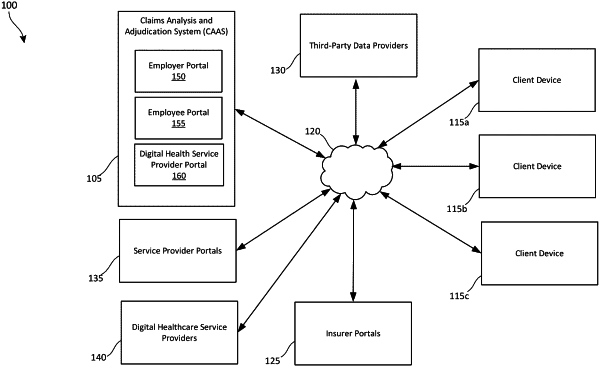| CPC G06Q 40/08 (2013.01) [G06F 16/2457 (2019.01); G16H 10/60 (2018.01)] | 20 Claims |

|
1. A data processing system comprising:
a processor; and
a machine-readable medium storing executable instructions that, when executed, cause the processor to perform operations comprising:
receiving, from a client device of a user associated with an employer, query parameters information identifying characteristics of digital healthcare service providers for providing digital care health services to be offered to employees of the employer;
converting the query parameters information from a first format to a second format to generate standardized query parameter information, the second format being associated with a standard schema;
providing the standardized query parameter information as an input to a first machine learning model;
analyzing the standardized query parameter information to obtain category information, the first machine learning model being trained using first training data formatted according to the standard schema to recognize a category or categories of services associated with the standardized query parameter information;
providing the category information and digital healthcare service provider information as an input to a second machine learning model, the digital healthcare service providers being providers that are available for providing digital healthcare solutions to the employees of the employer;
analyzing the category information and the digital healthcare service provider information using the second machine learning model to obtain digital healthcare service recommendations, the second machine learning model being trained using second training data formatted according to the standard schema to predict digital health services that the employer may provide to the employees of the employer based on the category information and categories of digital health services included in the digital healthcare service provider information; and
providing, via a network connection, the digital healthcare service recommendations to the client device associated with the user.
|